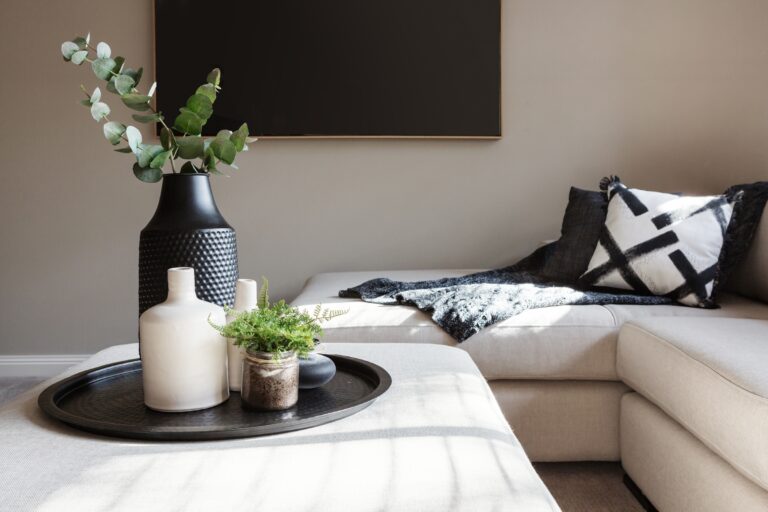Wondering if interior design is a good career choice for you? You’re not alone. Whether you’re a student, a career changer, or someone in a related field like architecture, it’s a question that comes up often.
Like any profession, interior design comes with its own mix of rewards and challenges. Some thrive on the creative freedom and variety, while others find the client demands and tight deadlines tough to navigate. This post will walk you through what interior designers really do, the skills you’ll need, and the biggest pros and cons—so you can decide if it’s the right path for your future.
Table of Contents
What does an interior designer do?
Interior designers are responsible for creating spaces that are both attractive and functional. The work encompasses spatial planning, material and furniture selection, lighting design, and more. Designers also need a solid understanding of construction techniques, accessibility requirements, and local building regulations to ensure that each space is safe, compliant, and practical.
The interior designer’s scope of work typically includes:
- Client collaboration: Identifying project goals, lifestyle or business needs, and translating them into design requirements.
- Conceptual development: Preparing mood boards and digital renderings that accurately capture the design vision.
- Material and product specification: Selecting flooring, lighting, furniture, finishes, and textiles.
- Technical planning: Drafting detailed floor plans with the help of interior design software.
- Project management: Coordinating with contractors, tracking budgets, and ensuring all parts of the project stay on schedule.
- Regulatory compliance: Ensuring designs adhere to building codes, fire safety, and accessibility standards.
- Site evaluations: Conducting walkthroughs to monitor progress and resolve issues during installation or construction.
A typical day in the life could look like:
- Reviewing progress on ongoing projects and prioritizing tasks for the day.
- Meeting with clients or contractors to discuss updates and confirm next steps.
- Visiting sites to oversee installations or make design adjustments.
- Meeting with suppliers to select materials and furniture.
- Working on moodboards and floor plans for current clients.
- Updating deliverables to implement client feedback.
Keep in mind that specific tasks may vary by specialization.
- Residential design: Focuses on lived-in spaces, from homes to apartments and multi-family units.
- Commercial design: Includes offices, retail stores, and corporate environments. Must consider specialized elements, from branding to employee experience.
- Specialty niches: Involves working within a focused area, such as historic renovations, luxury interiors, or sustainable design. Designers in specialty niches face unique tasks and challenges that influence their daily activities.
Benefits of being an interior designer
Interior design is a career that combines creativity and problem-solving. Designers get to see their ideas come to life in real spaces and feel the satisfaction of making places more functional and beautiful for the people who use them.
Here are some top benefits of working in this field:
- Creative expression
- Meaningful impact
- Diverse opportunities
- High earning potential
- Flexible work schedule
- Career satisfaction with visible results
- Professional relevance across industries, including architecture, construction, and sustainability
Keep in mind this list isn’t exhaustive. There are countless benefits to working as an interior designer, many of which stem from your own priorities and career goals.
Disadvantages of being an interior designer
Every career field has its downsides. Below, you’ll find a list of the most challenging aspects of interior design:
- Client challenges
- Fluctuating workload
- High competition
- Income inconsistency
- Responsibility for results
Keep these in mind as you explore the industry, but don’t let them be the deciding factor. It’s always better to weigh the pros and cons carefully than to pass up an opportunity because of a single concern.
Is being an interior designer hard?
With all that we’ve covered in this article so far, you may find yourself wondering, “Is being an interior designer hard?” The answer depends on your personal strengths, but keep in mind that the field is fairly demanding. It requires a balance of creativity and logistics, and each project involves multiple layers.
Here are some tasks that often feel difficult for interior designers:
- Balancing creativity with practicality: Finding aesthetically pleasing items is fun, but it can be challenging to make sure they’re also functional, durable, and cost-effective.
- Client relationship management: Some clients may struggle to articulate what they want or frequently change their minds, leading to frustration on the designer’s part. These situations require patience and clear communication. Designers often need to guide clients through difficult decisions, manage expectations when challenges arise, ensure the project stays within budget, and so on.
- Time pressure: Projects commonly overlap, and delays can create a domino effect.
- Problem-solving under pressure: Unexpected challenges, like supply chain issues, construction errors, or code violations, must be addressed quickly and in a way that doesn’t concern the client.
- Continuous learning: Staying relevant requires keeping up with evolving software, design trends, sustainability practices, and more.
Skills needed to succeed in interior design
To thrive in interior design, you’ll need a mixed bag of skills. For example, creativity is a must for the actual design process, but people skills and tech-savviness are essential for client interactions. Developing these diverse abilities takes time and practice, so it can be helpful to have a few skills mastered from the start.
Some of the most important skills for interior design include:
- Creative vision: Understanding color, composition, and spatial planning.
- Technical expertise: Comfort with drafting software, knowledge of building systems, and familiarity with construction processes.
- Business sense: Managing contracts, pricing, and marketing.
- Communication skills: Explaining concepts clearly and answering clients in a timely fashion.
- Organizational ability: Juggling multiple projects while staying detail-oriented.
- Adaptability: Continuing to learn about new trends, materials, and technology.
- Problem-solving: Finding creative solutions for challenges, from design hurdles to client concerns.
- Collaboration: Working well with clients, contractors, and other professionals.
Remember: it’s okay if some of these skills are new to you. You can develop them right alongside your business, provided you put in consistent effort along the way.
Average salary and career growth outlook
Compensation is an important factor in evaluating whether interior design is a good career. Salaries vary widely depending on experience, specialization, and location.
Here are the average salaries of interior designers in the US:
- Average: $70,563
- Low end: $42,864
- High end: $116,162 (USD)
And here are the average salaries of interior designers in Canada:
- Average base salary of $58,539
- Commissions ranging from $20,000 to $41,000 (CAD)
Here’s a look at the different variables that may affect the salary of an interior designer:
- Experience level: Entry-level designers often earn modest salaries. Income can grow with experience and strong portfolios.
- Location: Urban areas typically offer higher earning potential when compared to rural locations.
- Specializations: Designers focusing on commercial spaces, hospitality, or healthcare can often charge higher fees than residential designers.
- Business type: Firm owners, for example, have the potential to earn six figures, especially when managing large commercial projects or operating a successful business.
The career outlook remains strong, with continued demand for sustainable design, wellness-focused spaces, and efficient use of urban environments. For a more detailed breakdown and for ideas on how to increase your earning potential, visit this guide to interior designer salaries.
Tips for starting a career in interior design
Breaking into the interior design industry is exciting, but it can also feel overwhelming if you don’t know where to begin. The good news is, you can take it one step at a time and build your path as you go. Here are some simple tips to start with:
- Start with education
Learning the basics will give you confidence. Consider enrolling in a degree program, taking certification courses, or exploring free online resources. The more you understand design principles, the easier it will be to excel in your new career. - Build a portfolio
Don’t worry if you don’t have client projects yet. You can use class assignments, design concepts for your own home, or small projects you do for friends and family. Remember to share your work online so people can see what you’re capable of. - Get hands-on experience
Look for internships, junior roles at design firms, or home staging roles. Every experience will give you new insights into how real-life projects come together. - Make connections
Opportunities are more likely to come from people you know. Attend local design events, join professional groups, and chat with the vendors or contractors you run into. A friendly introduction could easily turn into a future collaboration. - Keep learning
Interior design trends and tools are always changing. To keep your work fresh and relevant, stay up-to-date with top styles, materials, and software. Stick with it long term
Interior design businesses take time to grow. Be sure to celebrate your small wins, whether that looks like a completed project, a new client, or a published design. Let these wins motivate you to keep going. Soon enough, what started as a small business venture could turn into a thriving career.
FAQs about working as an interior designer
Once your business is established, interior design can be a stable career. Like all self-employment paths, it may take time to get your business running and to build a reliable client and referral base. Many designers start their businesses as a side venture before transitioning to full-time.
The stability of your business can also depend on your niche. For example, residential design may be more sensitive to economic cycles, while sectors like healthcare and workplace design tend to remain steady. Diversifying your services—such as including both residential and commercial projects in your portfolio—can further strengthen stability.
Formal education is not legally required, but it can be incredibly helpful. Accredited programs teach drafting, codes, and design principles that are essential for your career. Some clients and firms prefer, or even require, designers to hold degrees or certifications.
This article can help if you’re hoping to start an interior design business with no experience or degree.
Yes. Independent designers typically set their own schedules and choose which projects they want to accept. During active projects or busy seasons, your flexibility might decrease as project deadlines and client needs take priority. And when you’re just starting, you might feel pressured to accept any project you can find, even if it doesn’t necessarily fit your preferences. As you gain experience and grow your client base, it’s more likely you’ll be able to prioritize flexibility by only accepting the jobs that fit into your lifestyle.
Administrative work is significant, so you have to be okay with taking a step back from the creative realm pretty regularly. Admin work includes preparing contracts, managing budgets, coordinating schedules, ordering materials, and more. While it may not be the most fun part of the role, it is extremely important nonetheless.
Yes. Many designers pursue projects across borders. Understanding local building codes, cultural preferences, and materials is essential, but quality design software and global communication platforms are also important.
This also means you can have the flexibility to move anywhere in the world without affecting your business—as long as you work in e-design, that is.
Is interior design right for you?
If you love design and are ready for the challenges that come with it, interior design can be a rewarding path filled with opportunities for long-term career growth. For the right person, it’s also more than a job—it’s a way to make a real difference in the world around you.
To see if this field is right for you, think about your skills, goals, and what day-to-day work would be like. Weigh the pros and cons, and if it feels like a fit, now could be the perfect time to start.
Ready to take the next step? Read our guide to starting an interior design business and start your free trial of DesignFiles.


